Gone Shopping exhibition captures the way we were
John Martin’s, Cox-Foys and Miller Anderson’s are just a few of the famous South Australian department stores celebrated in a new exhibition featuring architectural drawings and fascinating historic photographs.

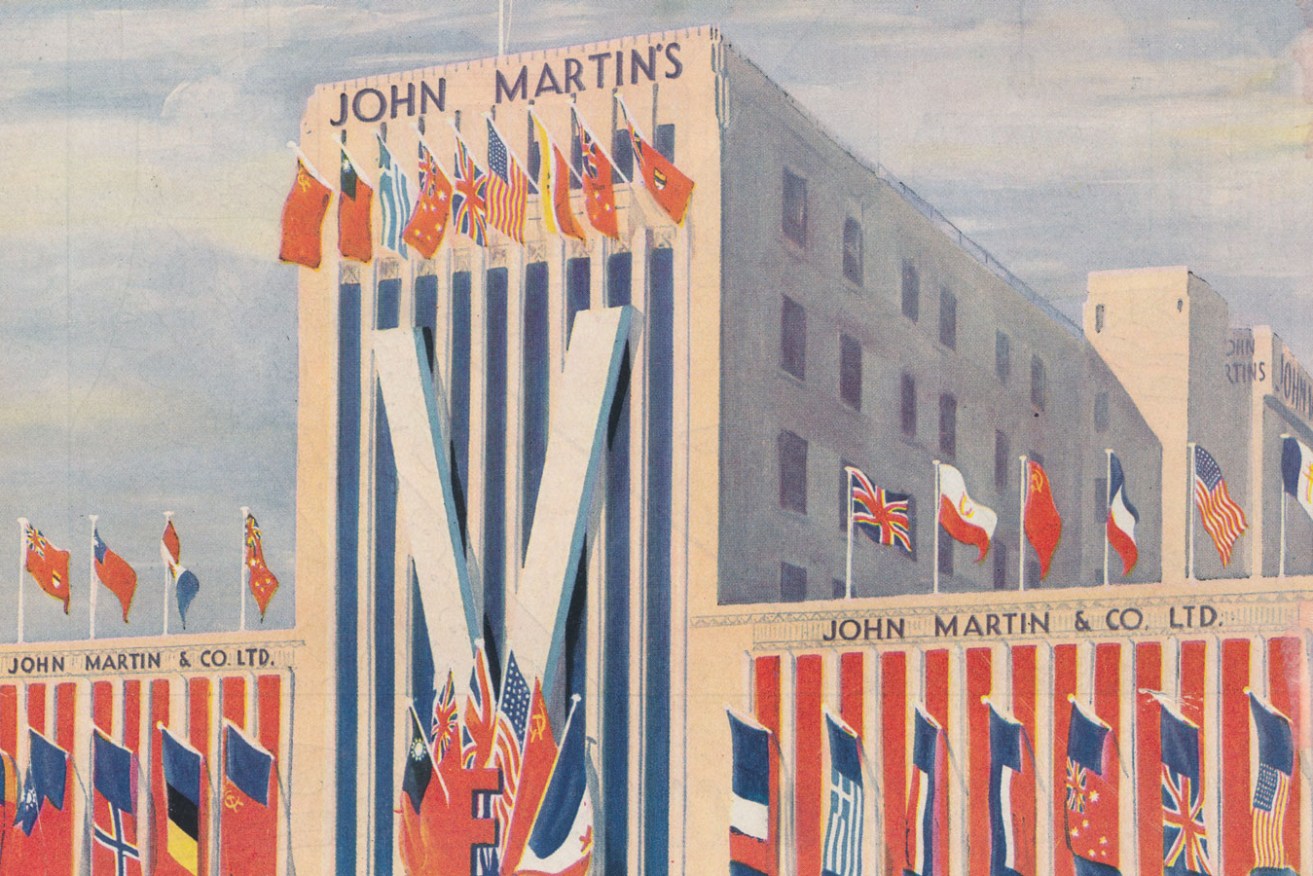
An image of John Martin's decorated for VE Day which appeared as an advertisement in 'Your Home' booklet in 1946.
When it comes to historical touch-points and meaningful memorabilia, department stores aren’t usually the first thing that come to mind, but an exhibition featuring some of South Australia’s most iconic stores and brands is providing a nostalgic and novel look back in time.
Gone Shopping: Department Stores in South Australia, at the Kerry Packer Civic Gallery, features photographs, architectural drawings and advertising material from across the decades. It draws on the UniSA Architecture Museum’s expansive collection, as well as historical photographs from the State Library of South Australia.
The exhibition showcases 35 framed works, including architectural plans and photographs of now-defunct stores such as Crooks and Brooker, Cravens, Charles Moore and Co, Cox-Foys, John Martin’s and Miller Anderson’s, plus current operating outlets such as David Jones, Myer and Harris Scarfe.
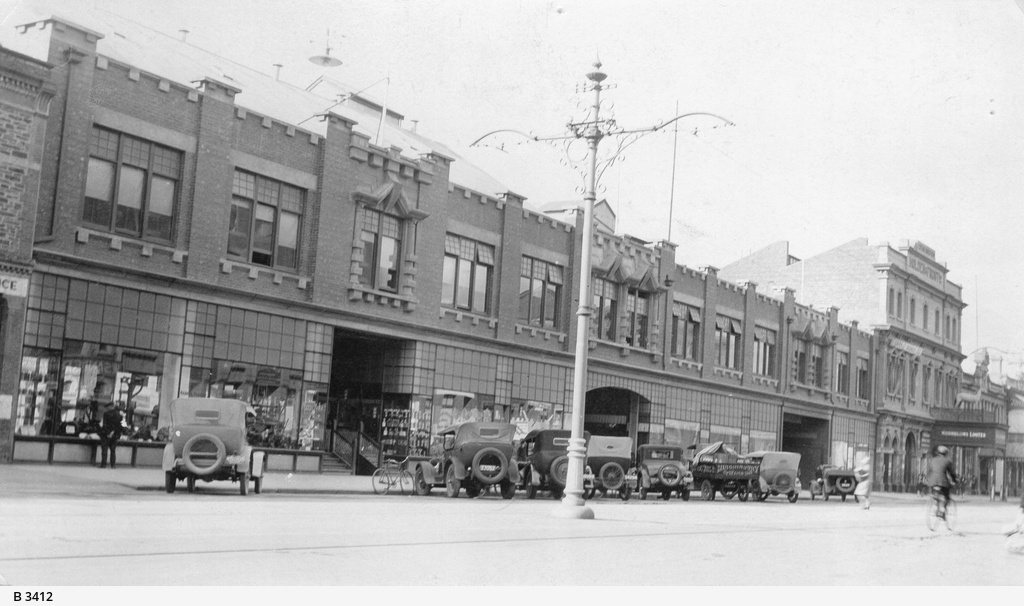
Harris Scarfe in Grenfell Street, circa 1926, from EH McMichael and Harris architects. B 3412 State Library of South Australia.
The exhibition is the brainchild of Architecture Museum curator Dr Julie Collins, who says she has long had a fascination with department stores, which first emerged in Australia in the late 19th century and flourished in the 20th century.
“This exhibition is something I have had in the back of my mind for a long time because, as a customer, some of the spaces I’ve enjoyed, particularly in the late 20th century, were stores with piano players and exhibitions and flower displays, which really drew me in,” Collins says.
“Department stores used to be very community-minded and they often had ballrooms and galleries and spaces for hire. Myers even had a lending library where you could borrow books, and there were the ubiquitous ladies’ restrooms.
“Before the advent of department stores there were no restrooms or toilets available throughout the city, so the ladies’ lounge became an important part of the department store experience, and they were very grand, with writing desks and lovely furniture and carpet.
“Researching this exhibition has really brought home the way department stores have acted as social and community spaces – which sounds strange, looking at the way they function today.”
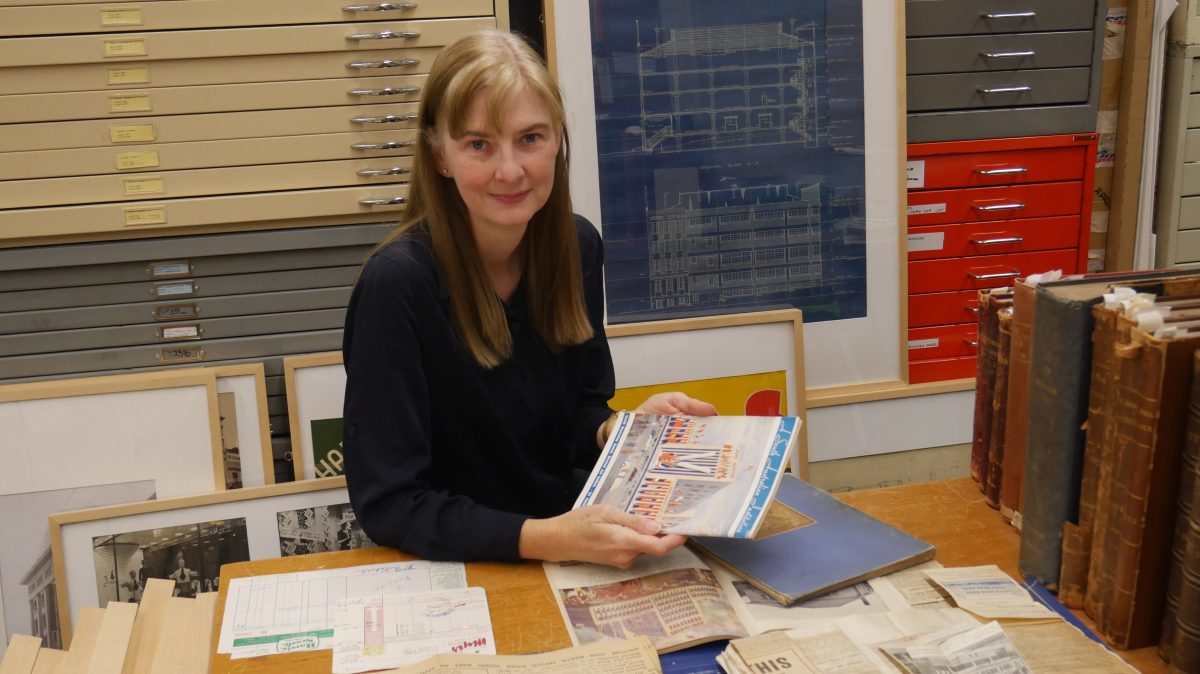
Curator Dr Julie Collins has had a long fascination with department stores.
Collins explains that the cavernous floor-plans of department stores allowed for the flexibility to display large items such as furniture and drapery, right down to smaller products like jewellery.
Items on display in the exhibition include a 1922 photograph of Miller Anderson’s, which opened as a drapers on Hindley Street in 1840 and ran until 1988. There’s also a black and white photograph of Charles Birks & Co in Rundle Street, designed in 1878 by architect Daniel Garlick, and a photo of the “perfume bar” at the Myer Emporium from 1938.
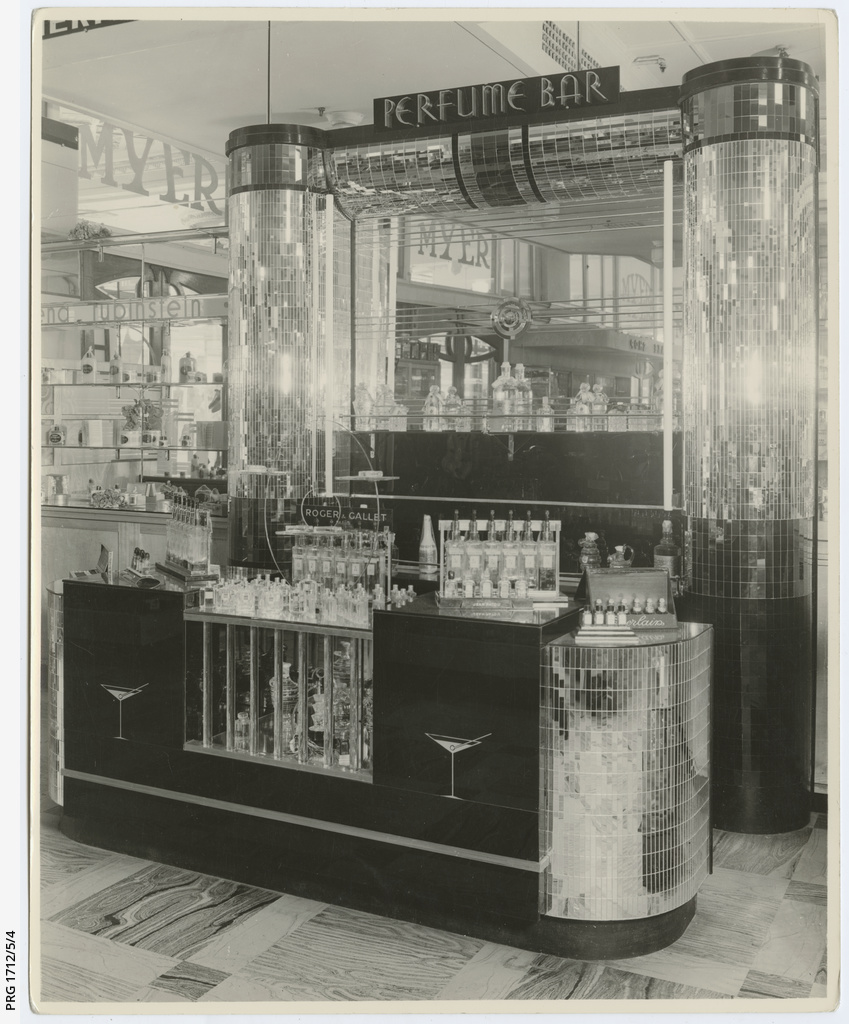
The Perfume Bar at the Myer Emporium, Adelaide, taken by photographer Keith Phillips in 1938. PRG 1712/5/4 State Library of SA.
An advertisement from Your Home booklet shows the shopfront of John Martin’s decorated for VE Day. Also a highlight are the drawings and calculations for the “Roof Top Fun Park” at Cox-Foys in Rundle Street, created by Hurren, Langman and James Engineers in 1962.
Drawings and photographs of regional and suburban stores and malls are also on display, including a photo taken in 1938 of Prest’s Ltd in Port Pirie, architectural drawings of West Lakes Shopping Mall, circa the mid-1970s, and a photograph of department store Peoplestores, taken in Elizabeth in 1965.
These images and drawings give insight into different architectural trends over the years, as well as reflecting society’s ever-changing shopping habits.
“Department stores used to have work rooms where they would manufacture products on-site, so John Martin’s had a millinery department making hats,” Collins says. “I found some figures that in 1893 they made 15,000 hats in the millinery department on site in the city in one year. Hats were a big thing back then.
“Restaurants also used to be a big thing in department stores and many people may remember the John Martin’s Buttery, where you’d put your tray on the rails and go along and get roast chicken and jelly. It was such a treat to be out in the city and having lunch.
“Window shopping is an interesting aspect. I think having people in the window doing things was quite a thing because I found something from the 1930s, when Charles Moore’s, which used to be where the courts building is now in Victoria Square, would have demonstrations in their windows and they actually had children playing with toys in the windows.
“And in the 1980s, people would go into Rundle Mall just to wander up and down to look at the shop window displays. That is something that has changed dramatically. Now, instead of looking at shop windows, we are looking online.”
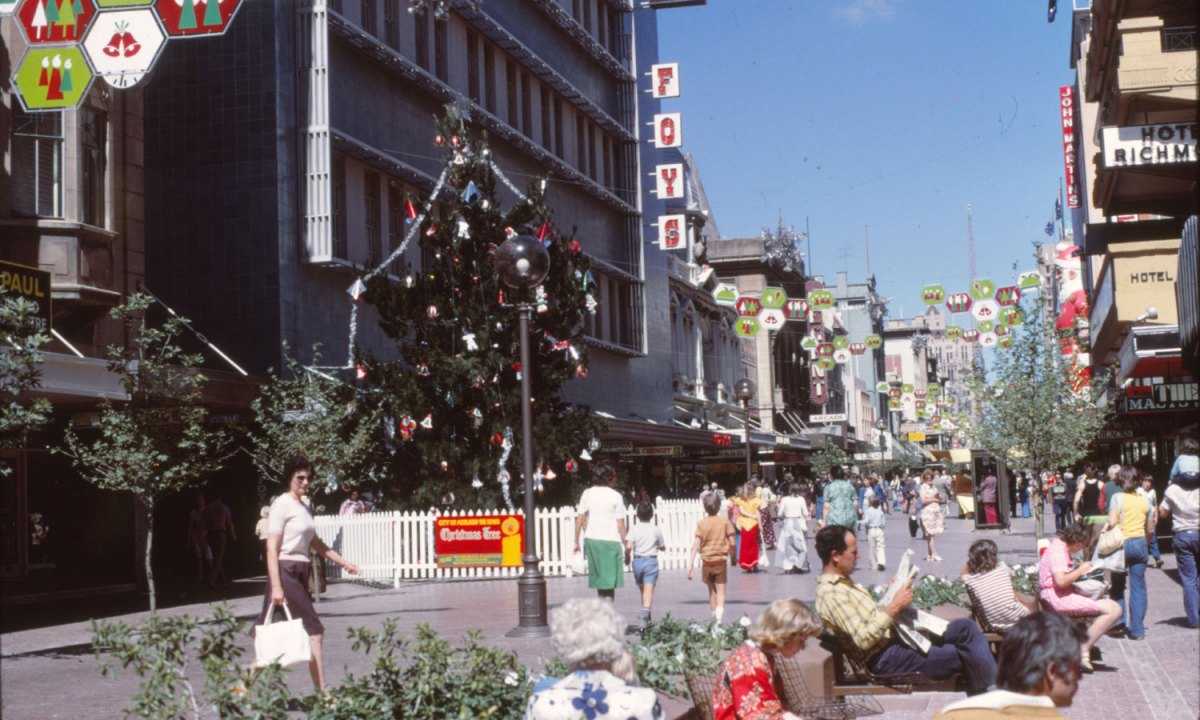
Rundle Mall with Cox-Foys on the left; photographer Albert Gillissen, 1976. Gillissen collection, Architecture Museum, University of South Australia.
Collins says exhibitions such as Gone Shopping tap into the nostalgia of days gone by, and of shared experiences as a community.
“We are able to connect with each other through those memories. I think post-COVID, a lot of us are looking for these kinds of connections again, and being able to do that through historical exhibitions and spaces, remembering times in these buildings which remain in the city, is so important in terms of social cohesion.
“I also think there is an opportunity to revitalise our department stores and look back at what was done in the past, and think about what they can do moving forward to attract customers.”
Gone Shopping: Department Stores in South Australia is showing at the Kerry Packer Civic Gallery (located on Level 3 of the Hawke Building, UniSA City West campus) until May 31. It is showing as part of the SA History Festival program.
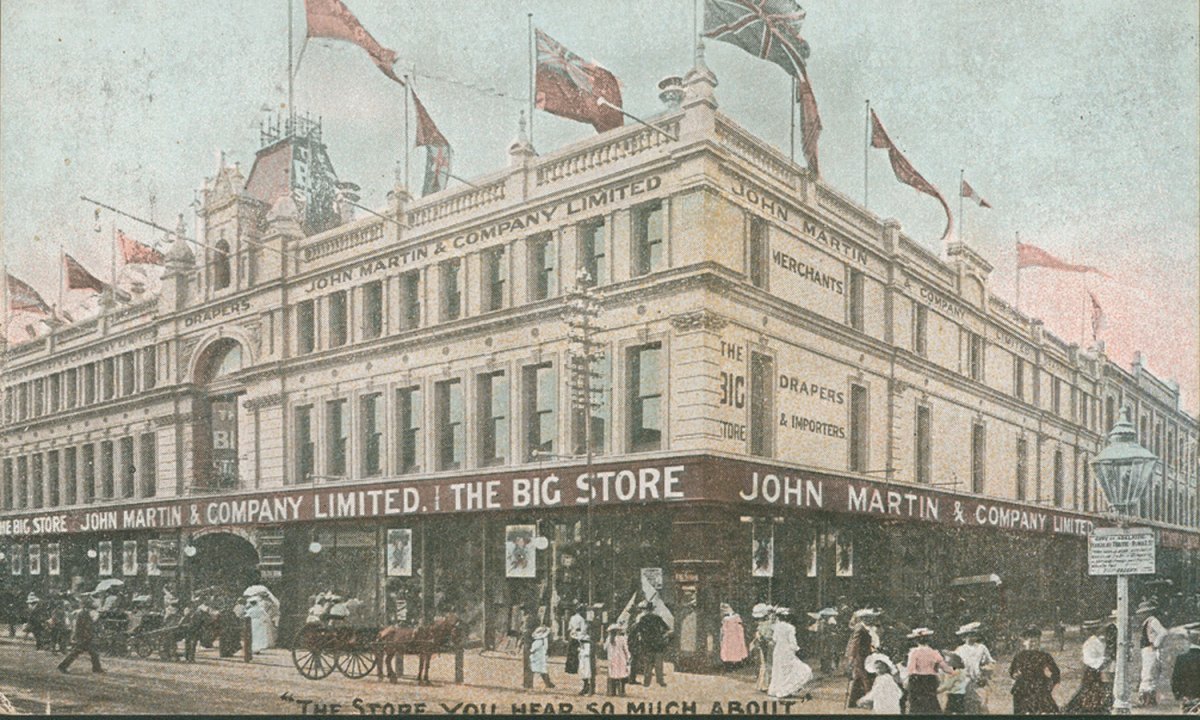
John Martin’s, Rundle Street, Adelaide, Edward Davies architect, 1885-9, postcard c.1900. B 16393/55 State Library of South Australia.
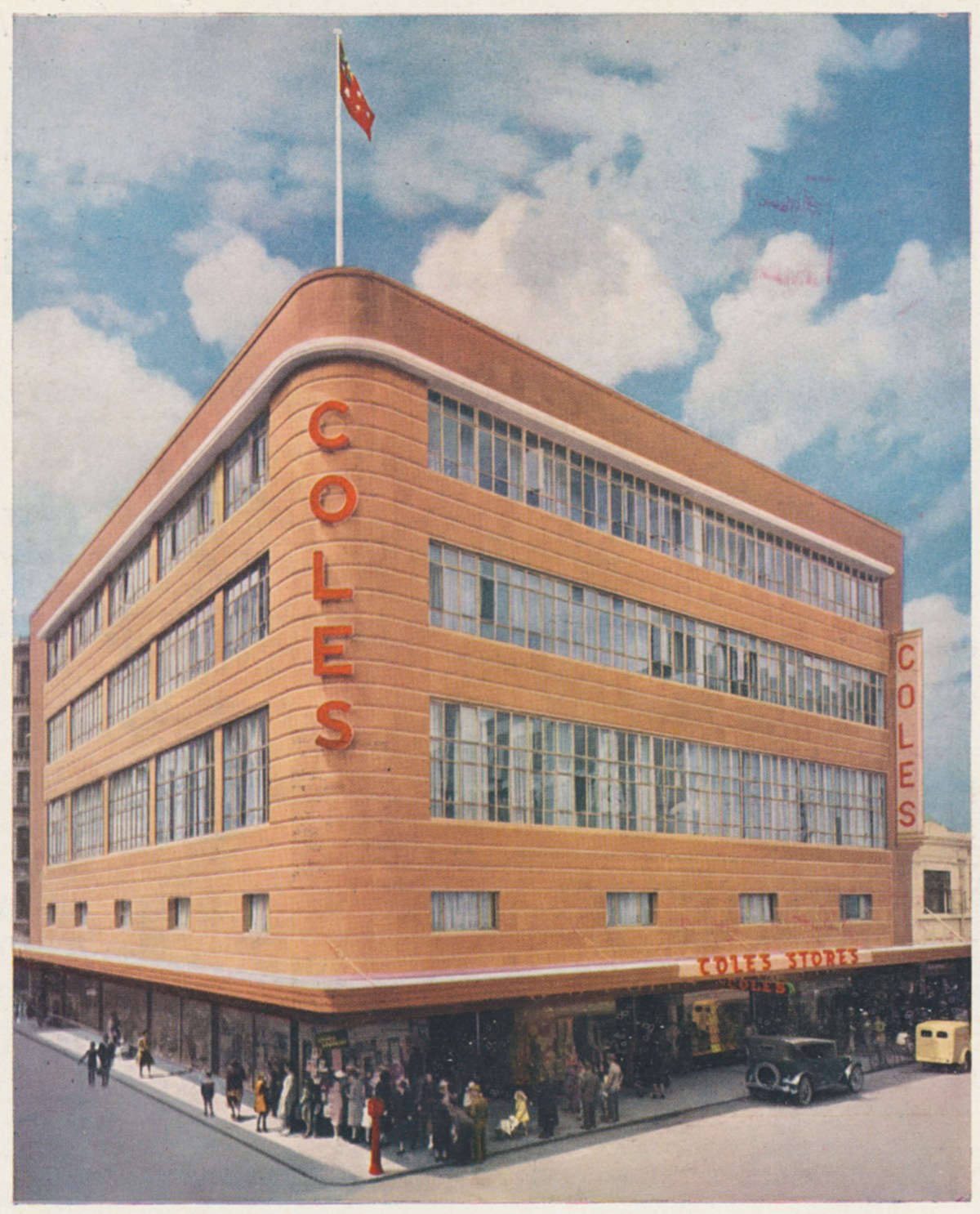
An image of Coles in a Wunderlich ad, Ramsays catalogue, in 1941. Architecture Museum, University of South Australia.
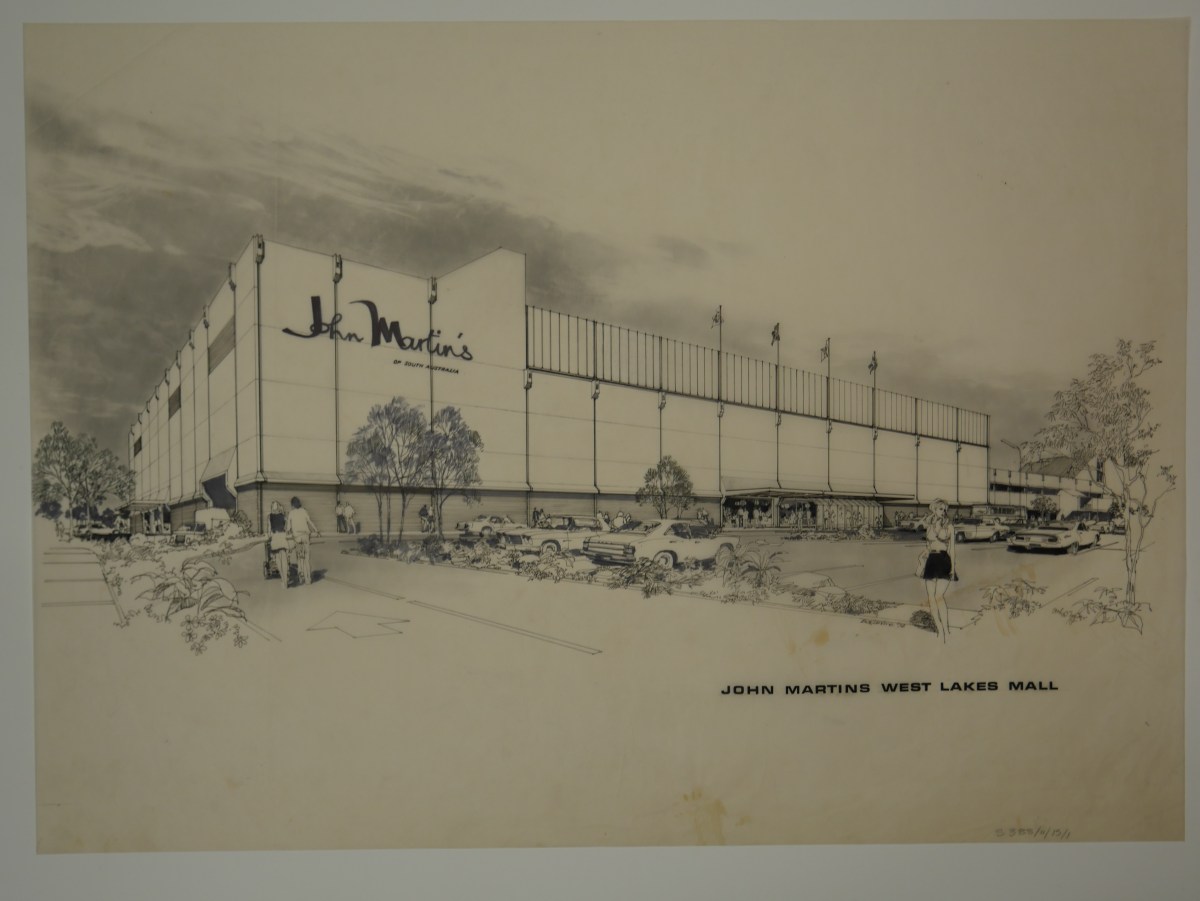
John Martin’s at West Lakes Mall; Dick Smith Associates with Snowden, Brougham and Moulds, 1974/5; Snowden collection, S388. Architecture Museum, University of South Australia.




